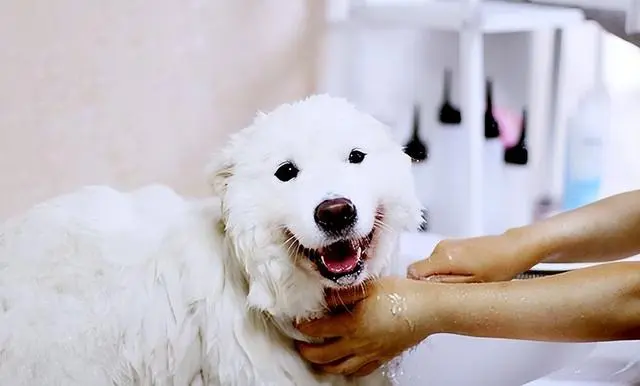Winter can be a challenging time for dog owners, especially when it comes to grooming. Bathing your dog in cold weather requires special attention to ensure your pet remains healthy and comfortable. In this article, we will explore the key considerations for bathing dogs during winter, common mistakes to avoid, and tips to keep your furry friend safe.

Understanding the Risks of Bathing Dogs in Cold Weather
Why Winter Baths Can Be Risky for Dogs
Bathing dogs during the winter months can pose several risks, including:
- Hypothermia
Exposing your dog to cold water can lead to hypothermia, a dangerous drop in body temperature. Dogs are more susceptible in winter when their fur is wet. - Skin Irritation
Winter weather can already dry out your dog’s skin. Bathing them too frequently or using harsh shampoos can exacerbate this problem, leading to irritation and discomfort. - Increased Risk of Illness
Bathing a dog in winter, especially if not dried properly, can weaken their immune system, making them more prone to illness.
Choosing the Right Time for a Bath
When Is the Best Time to Bathe Your Dog in Winter?
Timing is crucial when it comes to bathing your dog in the winter. Here are some guidelines:
- Warm Days
If possible, choose a warm day for a bath. Bathing outdoors in temperatures above freezing will help prevent your dog from getting too cold. - Indoor Baths
If the weather is too cold, consider giving your dog a bath indoors. Ensure the bathroom is warm and comfortable, and use space heaters if necessary. - Post-Exercise Baths
Bathing your dog after a play session can be beneficial as their body will be warmer, reducing the shock of cold water.
Preparing for the Bath
Essential Preparations Before Bathing Your Dog
Preparation is key to a successful winter bath. Here are some important steps to follow:
- Gather Supplies
Have all your supplies ready before starting. This includes dog shampoo, towels, a non-slip mat, and a brush. - Check the Water Temperature
Always use lukewarm water. Cold water can cause discomfort, while hot water can irritate your dog’s skin. - Brush Your Dog First
Brush your dog before the bath to remove any loose fur and tangles. This will make the bathing process smoother and more enjoyable for both of you.
Bathing Techniques for Winter
How to Properly Bathe Your Dog in Cold Weather
When it’s time to bathe your dog, follow these techniques to ensure their safety and comfort:
- Use a Gentle Spray
Use a handheld showerhead or a cup to wet your dog slowly. Start from their neck and work down to minimize the shock of cold water. - Apply Shampoo Sparingly
Use a mild, dog-specific shampoo and apply it evenly. Avoid getting shampoo in their eyes and ears. - Rinse Thoroughly
Make sure to rinse all the shampoo out completely, as residue can irritate the skin. - Dry Your Dog Immediately
After the bath, wrap your dog in a warm towel to absorb excess water. If your dog tolerates it, use a hairdryer on the lowest setting, keeping it at a safe distance.
Post-Bath Care
Caring for Your Dog After Their Winter Bath
Once the bath is complete, follow these tips to ensure your dog remains comfortable:
- Keep Them Indoors
Allow your dog to dry completely indoors before going outside. Cold drafts can quickly lead to chills. - Monitor Their Behavior
Watch for any signs of discomfort or shivering after the bath. If your dog seems cold, provide a warm blanket or sweater. - Hydrate and Nourish
Ensure your dog has access to fresh water and a nutritious meal after their bath. This will help them regain energy.
Common Mistakes to Avoid
Pitfalls Dog Owners Should Be Aware Of
To ensure a safe and pleasant bathing experience for your dog, avoid these common mistakes:
- Bathing Too Frequently
Bathing your dog too often can strip their coat of natural oils, leading to dryness and irritation. Aim for a bath every 4-6 weeks, unless necessary. - Ignoring Skin Condition
If your dog has skin conditions, consult your veterinarian before using any shampoo. Some dogs may need special formulations. - Using Human Products
Always use dog-specific shampoos. Human shampoos can disrupt the pH balance of your dog’s skin, leading to problems.
Conclusion
Bathing your dog in winter requires careful planning and execution to ensure their health and comfort. By understanding the risks, choosing the right time, and preparing adequately, you can make bath time a positive experience. Remember to monitor your dog closely and avoid common mistakes to keep them safe and happy during the colder months.

Comments (0)